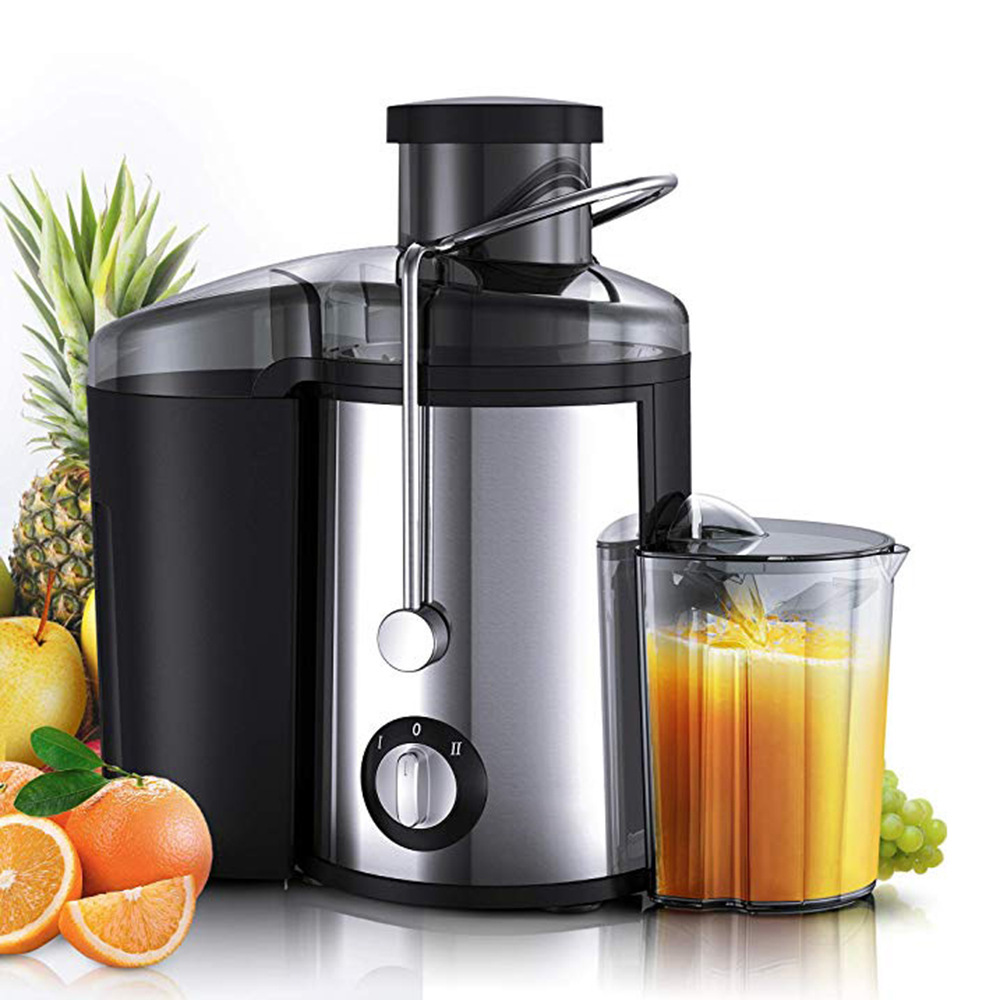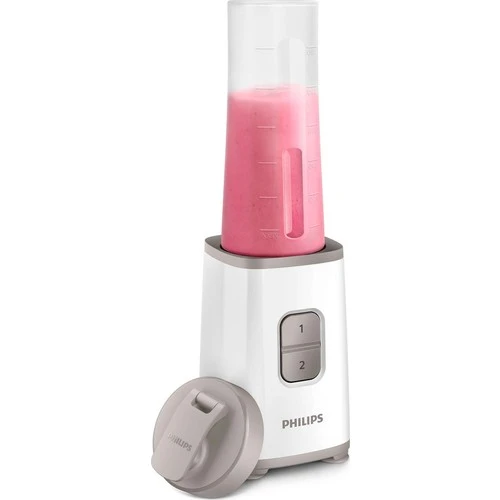
When it comes to healthy living and efficient kitchen routines, understanding the differences between a juicer and a blender is essential. Deciding juicer vs blender can significantly impact your diet and how you prepare your favorite beverages and meals. This comprehensive comparison explores the functionalities, benefits, and ideal uses of each appliance, helping you determine which one best suits your lifestyle and culinary preferences.
 Understanding Juicers and Blenders
Understanding Juicers and Blenders
What is a Juicer?
A juicer is a specialized appliance designed to extract juice from fruits and vegetables. By separating the liquid from the pulp, juicers provide you with nutrient-rich beverages filled with vitamins, minerals, and antioxidants. Juicers come in various types, including centrifugal, masticating (slow), and triturating, each offering different levels of efficiency and juice quality.
What is a Blender?
A blender is a versatile kitchen tool that pulverizes ingredients into smooth mixtures. Unlike juicers, blenders retain the fiber from fruits and vegetables, resulting in thicker, more filling beverages. Blenders can also be used for making soups, sauces, smoothies, and even crushing ice, making them a multifunctional addition to any kitchen.
Juicer&Blender: Key Differences
Extraction Process
The primary difference between a juicer and a blender lies in their extraction processes. Juicers separate the juice from the pulp, providing a clear, smooth liquid. This process often results in higher concentrations of nutrients per serving since the juice is free from fiber. In contrast, blenders retain the entire fruit or vegetable, including the fiber, resulting in a thicker, more substantial drink.
Nutrient Retention
Both appliances offer significant health benefits, but they do so in different ways. Juicers provide a more concentrated source of vitamins and minerals, making them ideal for quick nutrient boosts. However, the removal of fiber means that juicers may not be as filling as blended drinks. Blenders, on the other hand, preserve the fiber content, aiding in digestion and providing a feeling of fullness that can help with weight management.
Versatility and Functionality
Blenders are generally more versatile than juicers. They can handle a wide range of tasks, from making smoothies and soups to pureeing vegetables and crushing ice. Juicers, while specialized in their function, are limited to making juices and occasionally frozen drinks. If you’re looking for an appliance that can perform multiple kitchen tasks, a blender might be the better choice.
Cleanup and Maintenance
When it comes to cleanup, blenders tend to be easier to maintain. Most blender jars are dishwasher safe, and cleaning usually involves simply rinsing the container and blades. Juicers, especially masticating and triturating models, can be more challenging to clean due to the number of parts and the cleaning process required to remove pulp and residual juice.
Noise Levels
Blenders are generally noisier than juicers. The high-speed motors required for blending can produce significant noise, which might be a consideration if you prefer a quieter kitchen environment. Juicers, particularly slow masticating models, operate at lower speeds and produce less noise, making them a more discreet option for some households.
 Health Benefits: Juicer&Blender
Health Benefits: Juicer&Blender
Benefits of Using a Juicer
- High Nutrient Concentration: Juicers extract the liquid, which often contains a higher concentration of vitamins and minerals than blended drinks.
- Quick Digestibility: Without fiber, juices are easier to digest and can provide an immediate energy boost.
- Hydration: Juices are an excellent way to stay hydrated while consuming essential nutrients.
- Variety of Ingredients: Juicers can handle a variety of fruits and vegetables, allowing for a wide range of juice combinations.
Benefits of Using a Blender
- Fiber Intake: Blenders retain the fiber from ingredients, aiding in digestion and promoting a feeling of fullness.
- Versatility: Blenders can be used for various recipes, including smoothies, soups, sauces, and more.
- Satiety: The fiber content in blended drinks helps stabilize blood sugar levels and keeps you feeling fuller for longer.
- Ease of Incorporation: Including vegetables and fruits in smoothies can be an easier way to consume a balanced diet.
Choosing the Right Appliance: Factors to Consider
Dietary Goals
Your dietary goals play a significant role in determining whether a juicer or blender is better for you. If you aim to increase your intake of vitamins and minerals quickly, a juicer might be more beneficial. However, if you’re looking to incorporate more fiber into your diet and enjoy a more filling beverage, a blender would be the ideal choice.
Kitchen Space and Budget
Consider the space available in your kitchen and your budget when deciding between a juicer and a blender. Blenders are generally more affordable and take up less counter space, making them suitable for smaller kitchens. Juicers, especially high-end models, can be more expensive and require more storage space due to their specialized design and additional parts.
Ease of Use
Ease of use should also be a factor in your decision. Blenders are straightforward to operate with fewer parts and simpler assembly. Juicers can be more complex, with multiple components and steps for preparation and cleaning. If you prefer an appliance that is easy to use and clean, a blender might be the more convenient option.
Frequency of Use
Consider how often you plan to use the appliance. If you make smoothies and soups regularly, a blender is essential. On the other hand, if you enjoy daily fresh juices, investing in a high-quality juicer would be worthwhile. Assess your routine and how each appliance fits into your lifestyle.
 Juicer&Blender Top Models in the Market
Juicer&Blender Top Models in the Market
Top Juicers
- Breville Juice Fountain Elite: Known for its powerful motor and efficient juice extraction, this juicer handles a wide variety of fruits and vegetables with ease.
- Omega J8006 Nutrition Center: A masticating juicer that excels in nutrient retention and is versatile enough to make nut butters, sorbets, and baby food.
- Hamilton Beach Cold Press: An affordable option that offers slow juice extraction to preserve nutrients and enzymes.
Top Blenders
- Vitamix 5200: A high-performance blender famous for its durability and ability to create smooth, creamy textures for a variety of recipes.
- NutriBullet Pro: A compact, powerful blender ideal for making single-serving smoothies quickly and efficiently.
- Blendtec Designer Series: Known for its sleek design and powerful motor, this blender can handle anything from smoothies to soups effortlessly.
Making the Most of Your Appliance: Tips and Tricks
For Juicers
- Prep Your Ingredients: Cut fruits and vegetables into smaller pieces to ensure efficient juicing.
- Alternate Hard and Soft Produce: This helps in maximizing juice extraction and keeping the juicer running smoothly.
- Clean Immediately: Rinse the juicer parts right after use to prevent pulp from drying and sticking to the equipment.
For Blenders
- Layer Ingredients Correctly: Start with liquids, followed by soft ingredients, and then solids to ensure even blending.
- Don’t Overfill: Leave enough space for the ingredients to move around and blend properly without causing overflow.
- Use the Pulse Function: For better control over texture, especially when adding mix-ins like ice or nuts.
Juicer&Blender: Making the Right Choice for You
Assessing Your Needs
To determine whether juicer vs blender is the better option, assess your specific needs and preferences. If you prioritize obtaining the highest nutrient concentrations and prefer smooth, clear juices, investing in a juicer is the way to go. Conversely, if you value versatility and the inclusion of fiber in your beverages, a blender will better serve your purposes.
Combining Both Appliances
For those who want the best of both worlds, having both a juicer and a blender in the kitchen can provide maximum flexibility. This combination allows you to enjoy fresh juices when you want a quick nutrient boost and hearty smoothies or soups when you need a more filling meal.
Long-Term Benefits
Choosing the right appliance can have long-term benefits for your health and kitchen efficiency. A juicer can help you establish a consistent habit of consuming fresh juices, while a blender can encourage the incorporation of whole foods into your diet, supporting overall well-being.
 Frequently Asked Questions
Frequently Asked Questions
Is a juicer or blender better for weight loss?
Both juicers and blenders can aid in weight loss by incorporating more fruits and vegetables into your diet. Juicers provide nutrient-dense, low-calorie juices that can help curb hunger, while blenders create filling smoothies that keep you satisfied longer. The choice depends on whether you prefer liquid calories or fiber-rich drinks.
Can I make smoothies with a juicer?
While it is technically possible to make smoothies with a juicer by using the pulp, the texture will not be as creamy as with a blender. Juicers are not designed to handle the fiber and solid ingredients needed for a traditional smoothie, making blenders a more suitable choice for this purpose.
How do I clean a juicer vs a blender?
Cleaning a blender is generally easier and faster since it typically involves just rinsing and perhaps washing the blender jar and lid. Juicers, especially masticating and triturating models, require more detailed cleaning to remove all pulp and juice residue from multiple parts. It’s essential to follow the manufacturer’s instructions for both appliances to maintain their longevity and performance.
Which is more cost-effective: juicer vs blender?
Blenders are generally more cost-effective upfront compared to high-quality juicers. However, if you frequently make juices, the cost of maintaining and possibly replacing parts of a juicer over time should be considered. Blenders offer broader functionality
Are juicers or blenders healthier?
Both juicers and blenders can contribute to a healthy diet, but they do so in different ways. Juicers provide concentrated vitamins and minerals by removing fiber, which might be beneficial for nutrient absorption in quick servings. Blenders, on the other hand, retain the fiber from whole fruits and vegetables, aiding in digestion and providing a more balanced nutrient intake. The healthiness of each appliance depends on your dietary goals and preferences. Incorporating both into your routine can offer a balanced approach to nutrition.
What types of ice creams can I make with a blender?
While primarily designed for smoothies, soups, and sauces, some blenders can create ice cream-like textures by blending frozen fruits with a bit of liquid until smooth. However, for traditional ice cream, an ice cream maker is recommended to achieve the right creamy consistency. Blenders can be used for semi-frozen or sorbet-like desserts but may not provide the same texture as an ice cream maker.
Can I blend hot soups in a blender?
Yes, you can blend hot soups in a blender, but it’s essential to do so carefully to avoid spills and burns. Allow the soup to cool slightly before blending and use the pulse function to start. Always leave an opening in the lid and cover it with a kitchen towel to prevent steam from escaping. Alternatively, some blenders are specifically designed for handling hot liquids and may come with features to facilitate safe blending of soups and sauces.
 Conclusion
Conclusion
Deciding between juicer vs blender hinges on your personal health goals, culinary preferences, and kitchen needs. Understanding the juicer vs blender dynamics ensures that you choose the appliance that aligns with your lifestyle and enhances your dietary habits. While juicers excel in delivering concentrated, nutrient-rich juices, blenders offer versatility and the benefits of fiber-rich, filling mixtures. By evaluating the key differences, benefits, and potential drawbacks of each, you can make an informed decision that elevates your home kitchen experience. Whether you opt for one or both, integrating these appliances into your routine can contribute significantly to a healthier, more enjoyable way of living.











